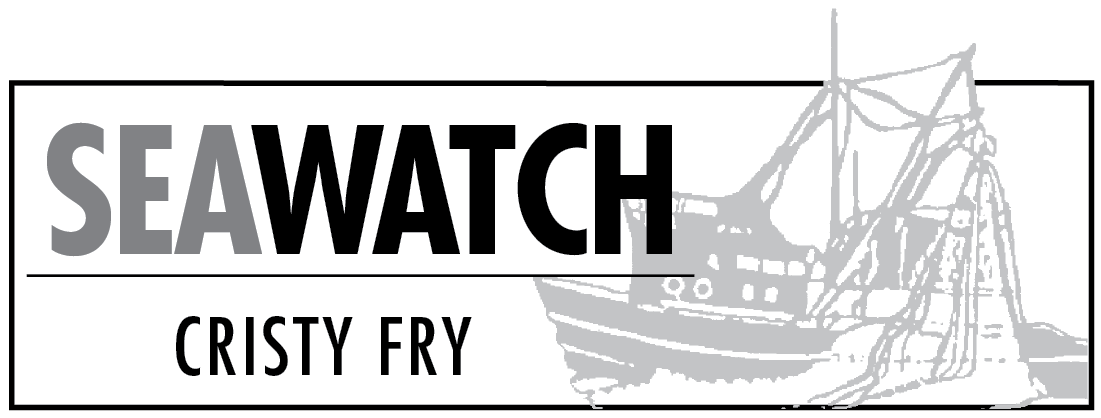Young fishermen are preparing to gather for the fifth Alaska Young Fishermen’s Summit in Anchorage beginning Dec. 10 and running through Dec. 12.
Put on by the Alaska Sea Grant Marine Advisory Program through the University of Alaska, the summit has taken place four times since 2007, and is intended to be biennial going forward.
The event offers a chance to meet, socialize with, and talk about issues with other young fishermen from around the state, as well as well-known fishing industry leaders.
It involves three days of training in the land-based aspects of running a fishing operation, such as marketing, business management, the fisheries regulatory process and the science impacting fisheries management.
It includes a visit to the Anchorage office of the Alaska Department of Fish and Game, where participants will talk with fisheries managers and meet the researchers using cutting-edge genetic science to better understand Alaska salmon runs and other important stocks.
Participants also practice public speaking, learn Alaska Board of Fisheries and North Pacific Fishery Management Council processes, and collaborate on solutions to issues and topics of importance to the Alaska fishing industry.
There is even a mock Board of Fisheries meeting, something event organizer Sunny Rice said was added at the last summit, and was very popular.
“Usually we would just have people come and talk to them,” she said. “‘Here’s how the process works, here’s people who are on the board, here’s how you testify.’ Last time we decided to really give them a hands-on (experience) , and actually practice testifying.”
The process involves people playing the role of board members, and old proposals that participants testify on and the “board members” deliberate on.
“They get a pretty good sense of what it’s going to be like when they finally do go to their first Board of Fish meeting,” Rice said.
She said that component has been well received and exciting to do because it is a much more fun and effective way to get the information to people.
She added that helping participants understand that they can make proposals of their own to the board is enlightening for many of them.
“Do your homework, and put your idea out there,” she said.
Rice said people often attend who are not actually fishermen, but are thinking about getting into the industry.
“The step that we do that is on business and learning the fishing business is great for somebody who is just considering it,” she said. “They help you think through a lot of the questions that you need to ask yourself: ‘What costs am I going to have, what are my sources of financing,’ because it’s real tough for a new person these days, it’s different than it used to be for a new person to try to get into the business.”
Rice added that not everyone who attends is new to the business.
“The stuff that we do on the global marketplace for Alaska seafood is good for everybody,” she said. “It gives them a better awareness of where the fish that they’re landing at the dock actually ends up, and what’s driving those prices.”
ice also explained that the “young” in the summit title is a relative term.
“There really isn’t a target age group,” she said. “We’re generally looking for people who are new to the business but committed to the business. You have a permit, or you’re about to buy a permit, you’re committed to it, but maybe you’re just starting out, maybe less than five years fishing.”
Rice said that the summit will continue to be held in centralized locations such as Anchorage to facilitate participation from other areas of the state, as well as the networking aspect of the event, but that individual components of the summit can be broken down and brought elsewhere.
Anyone interested in bringing any part of the summit agenda to Homer can contact the Marine Advisory Program at 907-274-9691, or map@sfos.uaf.edu.
The Alaska Young Fishermen’s Summit takes place at the Marriott Hotel in downtown Anchorage, 820 W. Seventh Ave.
Registration is $100. There is limited funding for travel assistance through Nov. 24, and reservations for the group rate for hotel rooms is open through Nov. 25.
The agenda, registration information and other information is available at http://seagrant.uaf.edu/map/workshops/2013/ayfs/index.html.
Rice can be reached at sunny.rice@alaska.edu, or 907-772-3381.
Homer regained its place at the top of the heap as the halibut capital of the world when it beat out Kodiak as the number one port in the state this year in terms of poundage for the first time since 2010.
Even though Kodiak had a higher number of deliveries, 587 compared to Homer’s 474, those deliveries added up to 4.29 million pounds in Homer versus 3.48 million pounds in Kodiak.
High fuel prices everywhere and high fish prices in Kodiak played a role in 2011 and 2012 in toppling Homer from its perch during those years, since it rarely penciled out to run the fish those extra miles.
Seward came in third with 351 landings for 2.76 million pounds.
Of the ports that had a halibut delivery, Haines was the smallest with 10 landings for 6,577 pounds.
The halibut season closed Nov. 7.
The International Pacific Halibut Commission holds its interim meeting Dec. 4 and 5 in Seattle, and will release the staff recommendations regarding quotas for the 2014 season.
The meeting will be webcast. Register to listen at http://www.iphc.int/home.html.
Cristy Fry has commercial fished out of Homer and King Cove since 1978. She can be reached at realist468@gmail.com.



